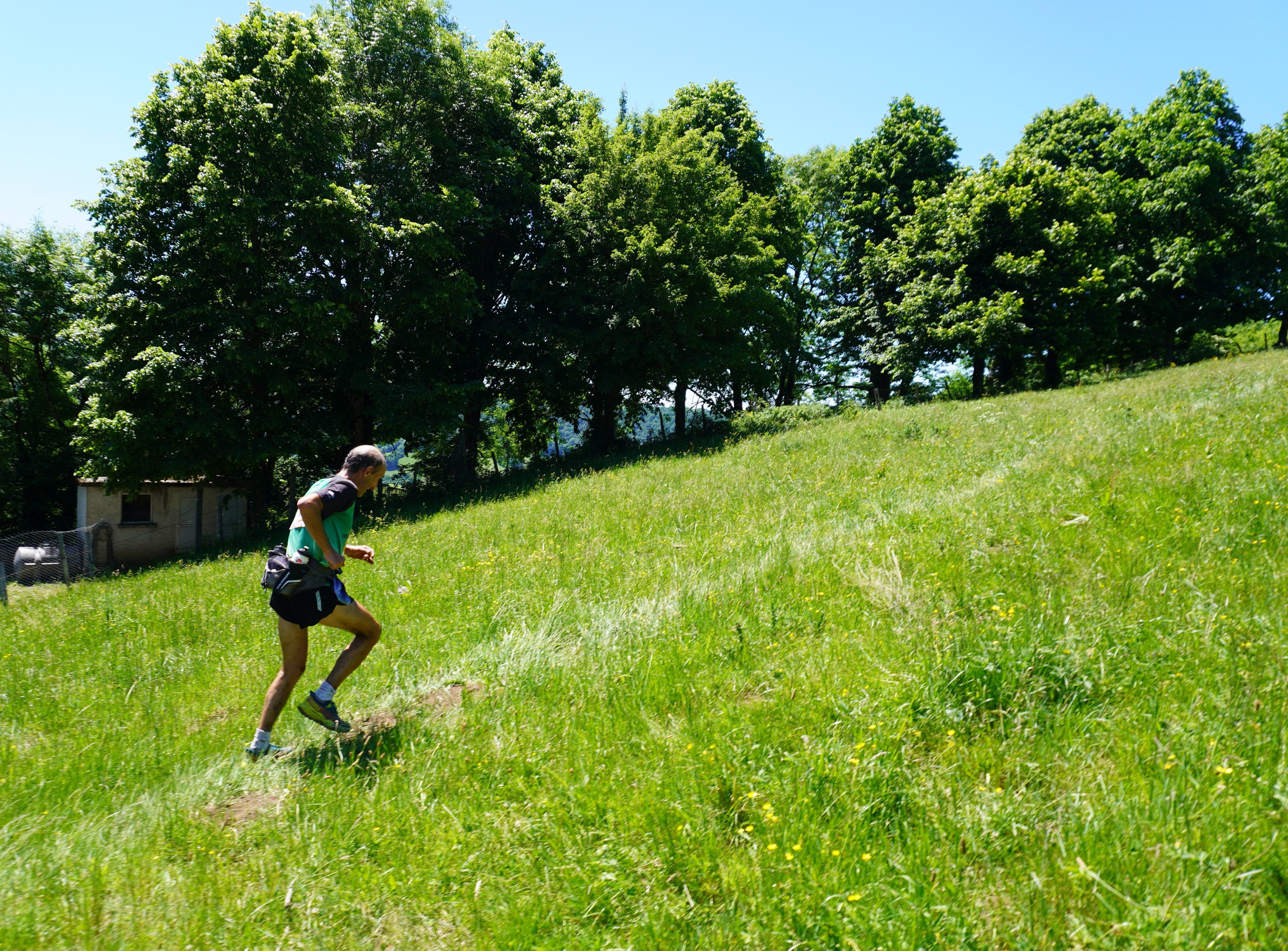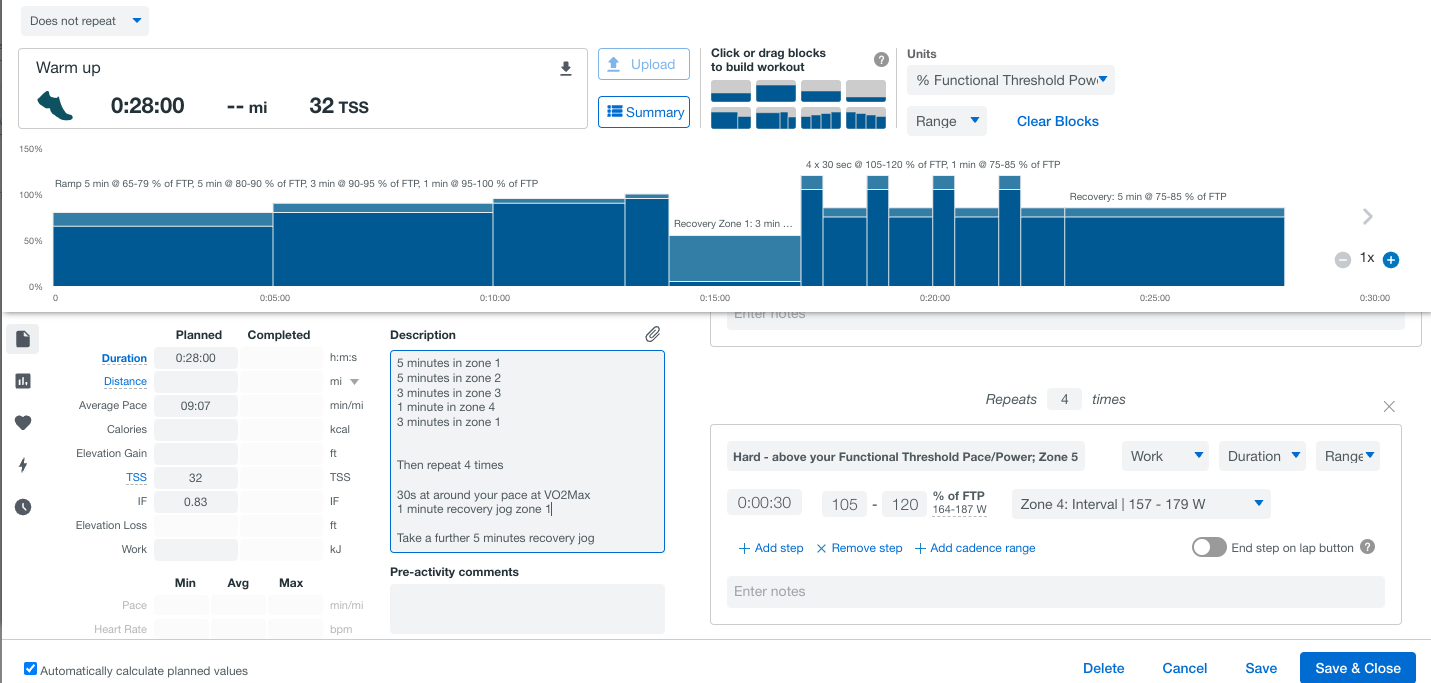VO2Max Training for the Older Athlete

VO2Max is a key fitness marker. It can be tempting to think that as we age it's better not to push ourselves so hard, but safely maintaining and training your VO2Max will help you continue performing as a Masters Athlete.
What is VO2Max?
VO2Max is a short hand way of saying 'the maximum rate of oxygen flow' and it is usually measured in millilitres of oxygen per kilogram of body weight per minute (mlO2/kg/min).
You will notice that this measurement does not include pace/speed or power. Furthermore, this is not something that could be measured except in a laboratory with blood tests/an oxygen mask and some serious hard work.
So how does it relate to endurance sport? The higher the pace/power you can maintain at your maximum rate of oxygen flow (often assumed to be 4litres per minute), the faster you will be overall (even at lower intensities).
You can do a laboratory test to find your pace/speed/power at your VO2Max, but in general terms your pace at VO2max translates to the maximum average pace/power you can maintain for around 5 minutes.
How do We Train VO2Max?
Given that very few of us could (and even fewer of us would like) to train in laboratory conditions to ensure that we are reaching our VO2max, it's usually best to make some assumptions and create workouts that make us work so that we breathing hard enough and making our heart work hard enough that we are reaching our maximum oxygen flow.
A good way to do this if you are fit enough it to do a Maximum Five Minute Test (ie after a good warm up go as hard as you can for 5 minutes, aiming to keep the pace even, but hard enough that after five minutes you will either have to slow down or stop). Once you know what your maximum pace/speed or power is for 5 minutes you can then do targeted workouts at this power/pace/speed.
Alternatively you could aim to do one of the following workouts as hard as you can and you are likely to be working your at your VO2Max:
- 8-10 repetitions of 30 to 45s with 15 to 20s recovery. In this case the rest is short enough that you do not recover and therefore your heart has to keep beating faster and faster and you attain maximum oxygen flow.
- 4-6 repetitions of 3-4 minutes with 3 minutes recovery. In this case the repetitions are long enough that done at the right intensity your heart has to beat hard enough for maximum oxygen flow.
What Considerations do I Need to Make as a Masters Athlete?
As you can imagine this type of training is hard; it makes your heart beat fast; it requires you to breath deeply and makes significant demands on the muscle groups you are recruiting.
For any athlete doing this type of workout, you need to be sure that your heart is healthy; if you have a history of heart problems or suspect you might have some heart trouble then consult your cardiologist before trying this type of workout.
As we age our muscles lose their elasticity. To reduce injury risk it's a good idea to do a good warm up like the one below to prepare your muscles for the demanding session.

To get the most out of any session you need to approach it 'ready to perform' so make sure you are sufficiently fresh for a workout of this intensity. This usually means having a 48 hour window between one hard workout and another. A hard workout is any workout above zone 2 (easy chatty intensity) and long endurance workouts. You may find as an older athlete you need more than the traditional 48 hours recovery.
An inevitable side effect of aging is loss of muscle mass; given the demands put on your muscles with this type of workout, adding some strength training into your programme will help you maximise these harder sessions.
Your pace/speed or power at your VO2Max will change as you age, so it's important to adapt these to your capabilities. You will still be training your VO2Max and getting fitter/maintaining fitness even if your pace over 5 minutes is not the same as it was when you were 25.
Training at your VO2Max can help you maintain and progress your fitness, give you confidence and keep you competitive with other masters athletes (and maybe even some younger athletes). A few well placed high quality workouts will have a massive fitness benefit across all your training zones keeping you fit and fast for longer.
If you are not sure how to plan your training and include some harder workouts why not book a free 20 minute consultation with no commitment to see how we can help you?
Subscribe to our blog
Please share with your friends
Other articles you might like
July 18, 2024

Comments